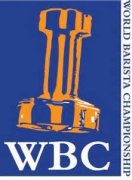Basic knowledge of coffee bean appearance and grading of Ethiopian coffee

The classification we are discussing here refers to the classification of beans in the country of origin of coffee. (No matter which country coffee beans are ungraded)
Ethiopian coffee beans are divided into five grades.
The first and second stages are reserved for washed beans.
Grade 1 represents 0-3 defective beans per 300g of raw beans;Grade 2 represents 4-12 defective beans per 300g.
Grade 1(G1) washed beans are extremely rare and difficult to buy. At present, all washed beans exported from Ethiopia are G2 grade.
The quality of sun-cured beans is ranked as G3, G4 and G5. Although G4 has significantly fewer defective beans than G5, coffee farmers claim that in order to save taxes on exports, they often lower the quality of G4 to G5 to save money. This may just be marketing gimmick, in fact, the G5 quality is not as good as the G4.
Ethiopia's beans are easy to identify, most of the beans are small and thin pointed long beans, so-called "long berry", and often mixed with small oval short beans, so-called "short berry", it seems that the size of the beans is uneven.
G4 or G5 commercial bulk beans are mostly mixed with hundreds of different varieties of coffee beans from various producing areas, and the phenomenon of uneven beans is most obvious.
Ethiopia coffee has the most citrus aroma in the world, whether espresso or hand brewed, and when extracted, it smells tangy orange or lemon.
On the palate there are intense floral, fruity and sour notes characteristic of Ethiopia. The biggest drawback is that it is easy to bake unevenly, especially sun beans. Even the best G3 Harald sun-baked beans often have uneven color, and it is most important to taste good.
Important Notice :
前街咖啡 FrontStreet Coffee has moved to new addredd:
FrontStreet Coffee Address: 315,Donghua East Road,GuangZhou
Tel:020 38364473
- Prev

Several famous coffee competitions in the world
World Barista Championship http://www.worldbaristachampionship.com/ World Barista (barista) the rule of this competition is that each contestant is required to make 4 cups of espresso, 4 cups of cappuccino and 4 cups of creative coffee based on espresso in 15 minutes. The judges will start from the use of coffee equipment and coffee beans
- Next

The definition of fine coffee what is fine coffee?
What is boutique coffee? The word is from Erna. Ms. Erna Knustsen was the first to reveal it in the Tea and Coffee monthly (TeaCoffee Trade Journal) in 1974. At that time, she worked as a coffee purchasing expert at B.C.Ireland in San Francisco. Based on her professional knowledge, she coined the new term [specialty coffee], which highlighted that only in the most
Related
- Beginners will see the "Coffee pull flower" guide!
- What is the difference between ice blog purified milk and ordinary milk coffee?
- Why is the Philippines the largest producer of crops in Liberia?
- For coffee extraction, should the fine powder be retained?
- How does extracted espresso fill pressed powder? How much strength does it take to press the powder?
- How to make jasmine cold extract coffee? Is the jasmine + latte good?
- Will this little toy really make the coffee taste better? How does Lily Drip affect coffee extraction?
- Will the action of slapping the filter cup also affect coffee extraction?
- What's the difference between powder-to-water ratio and powder-to-liquid ratio?
- What is the Ethiopian local species? What does it have to do with Heirloom native species?

